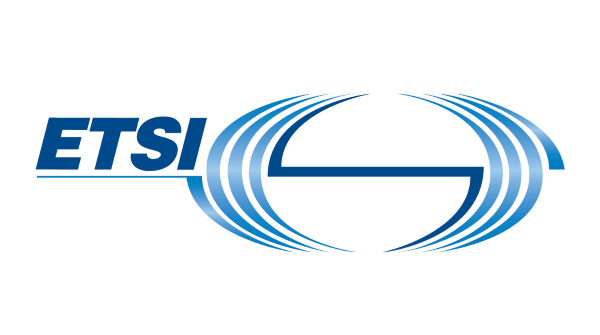“ETSI’s mandate is to choose the best technical solution, and its main consideration of IPR is to ensure that FRAND licenses are available. So long as holders of IPR declare the same and agree to be prepared to license on FRAND terms to the extent essential, that should meet ETSI’s objectives.”
Editor’s note: Arty Rajendra acted as counsel in the UK Optis v. Apple case discussed below.
Two recent court decisions in the United States and the United Kingdom, respectively, have considered (i) the disclosure obligation pursuant to Clause 4.1 of the European Telecommunications Standards Institute’s (ETSI) Intellectual Property Rights (IPR) Policy, and (ii) the impact this has on the enforceability of a patent subject to the Policy.
As a reminder, Clause 4.1 of the ETSI IPR Policy states:
Subject to Clause 4.2 below, each MEMBER shall use its reasonable endeavours, in particular during the development of a STANDARD or TECHNICAL SPECIFICATION where it participates, to inform ETSI of ESSENTIAL IPRs in a timely fashion. In particular, a MEMBER submitting a technical proposal for a STANDARD or TECHNICAL SPECIFICATION shall, on a bona fide basis, draw the attention of ETSI to any of that MEMBER’s IPR which might be ESSENTIAL if that proposal is adopted.
Both decisions were in the ongoing patent and fair, reasonable, and non-discriminatory (FRAND) related litigations between Optis and Apple. In summary, the decisions confirmed that neither Optis nor its predecessors had breached their duty to disclose IPR to ETSI under clause 4.1, nor did the timing of their disclosures constitute egregious misconduct, so as to result in an implied waiver under U.S. law, or in the case of the UK, a proprietary estoppel, preventing or restricting enforcement of the patent.
Before looking at these recent judgments in detail it is useful, for purposes of context, to look at earlier decisions from the Northern District of California that reached a different result.
Core Wireless/Conversant Wireless v. Apple
In a 2017 decision of the U.S. Court of Appeals for the Federal Circuit, in the matter of Core Wireless Licensing S.A.R.L. v. Apple Inc., the Federal Circuit vacated the district court’s finding of no unenforceability and remanded the issue of “whether Nokia or Core Wireless inequitably benefited from Nokia’s failure to disclose, or whether Nokia’s conduct was sufficiently egregious to justify finding implied waiver without regard to any benefit that Nokia or Core Wireless may be obtained as a result of that misconduct.” On remand, the district court held that that Nokia’s conduct did not rise to the level of egregious misconduct sufficient to find implied waiver in the absence of an unfair benefit being realized. Regarding benefits realized, however, the district court found that Nokia and Conversant had obtained an unfair competitive advantage because “Nokia’s failure to disclose its IPR [Intellectual Property Rights] deprived ETSI members the opportunity to make a fully informed decision as to the technical solution for the GPRS standard”. As such, the patent in question was found unenforceable on the basis of implied waiver. This conclusion was reached by the district court based on the uncontested evidence of Apple’s expert, Dr. Michael Walker, who had testified that “ETSI members are incentivized to choose technical solutions that are free of licensing costs”.
Conversant appealed once again and in its Corrected Appeal Brief argued that the sole objective of ETSI’s IPR Policy was to ensure licenses on FRAND terms and conditions were not “unavailable”, which was not the case in view of Nokia’s prior blanket FRAND commitment. Further, Conversant pointed to a review by ETSI of its own IPR policy which concluded, “[t]he main task of a Technical Body is the search for the best technical solution and the existence of essential IPR is not a barrier”. And in response to Mr. Walker’s testimony that if “…two solutions were technically the best, then you’re more likely to choose the one for which there was no cost ultimately to your company…”, Conversant noted that no evidence was put forward by Apple as to any royalty-free alternatives to Nokia’s technology that were available at the time. With respect to the notion that Nokia received an unfair benefit simply because IPR disclosure might have been material to the standardization process, Conversant noted that such an interpretation of the Federal Circuit’s ruling would not only render the remand moot but, according to one estimate, would render 88% of all IPR disclosed to ETSI unenforceable. Similar arguments were set forth in Amicus briefs filed by Nokia and Ericsson/Panasonic/Blackberry/Philips respectively, with both briefs further noting that the vast majority of Apple’s own patents (88-90%) were similarly disclosed after the standard in question was adopted.
Optis v. Apple (U.S.)
More recently, such issues were considered in Optis Wireless Technology, LLC et al. v. Apple Inc. (E.D. Texas). In this case, however, the prior owners of the patents at issue were not found to have breached any duty of disclosure to ETSI as a result of not disclosing their IPR by the “Stage 3 Freeze Date” – see Opinion and Order as to Bench Trial Together with Supporting Findings of Fact and Conclusions of Law (“Opinion and Order”). Judge Rodney Gilstrap came to this conclusion by finding, among other things, that “the ETSI IPR Policy is not clear and unambiguous as to the timing of its disclosure requirement…” and, relying on the evidence of Optis’ French law expert, “that custom in the industry and course of dealing are relevant tools for interpreting language in French contracts” (French law governs the ETSI IPR Policy). With respect to such custom in the industry and course of dealing, the Opinion and Order said the following:
[CL24] ETSI participants do not understand the organization’s IPR Policy to require
disclosure before the freeze dates. The vast majority of ETSI participants disclose their intellectual property rights after both the Stage 3 and the TTCN freeze dates. (Dkt. No. 521 at 122:10–123:7, 124:1–125:9.) For example, 94% of all ETSI declarations for Release 8 came after the TTCN freeze date of March 12, 2009; and 96.8% of all ETSI declarations for Release 8 came after the “Stage 3 freeze date.” (Dkt. 521 at 124:1-20.) ETSI is aware of this practice of disclosure and there is no evidence it has taken any action to encourage or enforce earlier disclosure. (Id. at
123:17–25, 126:13–20.)
[CL25] The Court finds no clear and convincing evidence that Optis has breached its duty to disclose its essential IPR to ETSI; rather, the evidence indicates that Optis and its predecessors-in-interest in the applicable patents timely disclosed their IPR to ETSI in a manner consistent with the SSO’s procedures.
And, like the district court in the Conversant case, Judge Rodney Gilstrap also found that the patentees “have not acted with such egregious misconduct as to justify a finding of unenforceability.”
Optis v. Apple (UK)
In the UK, Apple ran similar arguments, but under the law of proprietary estoppel. Apple had two arguments. The first was that “ETSI and/or members of RAN WG2 were under an assurance that Ericsson [Optis’ predecessor-in-title] had no IPR over the Ericsson TDoc, as a result of which a chance was lost for them to seek an alternative, unpatented solution”. Secondly, Apple argued that “even if there was no likelihood of the assurance making any difference in terms of a non-patented solution being sought or found, ETSI’s rules and procedures were not followed, and that [was] enough” to raise a proprietary estoppel preventing or restricting Optis for enforcing its patent.
Unlike the U.S. decision, the UK decision goes into vast detail on the factual background, including the history and arrangement of ETSI (and 3GPP) and its IPR Policy, how the working groups function, and the operation of the ETSI declaration process. When construing Clause 4.1 the UK court also looked very closely at French law which requires consideration of ETSI’s general policy goals in relation to Clause 4.1 and a wide range of other materials, including importantly in this case, the behavior of declarants and the comprehensive evidence that the great majority of declarations, including by Apple itself, are made after the Stage 3 freeze date.
The evidence presented to the court showed that working group participants did not give any thought as to whether or not the technical proposals were or might be the subject of IPR. Furthermore, if the RAN WG2 participants had thought about whether Ericsson was likely to have IPR over the TDoc, they would have concluded that it was likely, regardless of whether or not Ericsson had filed an early declaration. This was because: (i) the RAN WG2 group was “patent heavy”, (ii) Ericsson was a well-known innovator, and (ii) the relevant TDoc was a solution to a new problem arising in LTE.
The court found “It is a much more natural assessment of Clause 4.1 that it imposed a flexible obligation to be assessed in the light of circumstances of a particular situation and in the context of whatever ETSI’s procedures were at the time.” ETSI’s “recognition that “late” declaration was not a problem so long as the FRAND regime worked militates against a hard-edged requirement of the kind that Apple asserts, and the goal of declarations being made for the purposes of licensing negotiations, which clearly was important, also did not require a hard-edged rule”.
The UK court rejected Apple’s “contentions as to the meaning of Clause 4.1, and therefore its case that Ericsson was in breach, which depended on there being a definite time limit for each sentence of [Clause 4.1]”. Accordingly, Apple’s two arguments failed, and the court found there was no proprietary estoppel. Tellingly, the UK court also held that even if there had been a finding of proprietary estoppel, the relief sought by Apple that Optis could not enforce its patent, or alternatively, seek an in injunction “would be plainly disproportionate” and would have been refused.
Final Comments
Stepping back, the notion that standards participants believe those who propose solutions for standardization may not have IPR associated therewith, and that there may be technically comparable royalty-free technologies available as an alternative, is naïve and ignores the role patents play in realizing a return on one’s investment in developing the technology, and the reality of how ETSI and the working groups operate.
As noted in the ETSI Guide on IPR, “[i]n complying with the [ETSI IPR] Policy the Technical Bodies should not become involve in legal discussions on IPR matters” (emphasis added). As a result, the UK court found, based on the evidence before it, that even if IPR is disclosed before a working group meeting, a participant could not use the presence of IPR as a reason to reject a technical proposal, or to discuss that with the other participants. All they could do is argue about the technical merit because that is only basis upon which a technical proposal could be accepted or rejected. According to Nokia’s Amicus brief filed in the second Conversant appeal, therefore, “the background assumption always has been that technical contributions may be covered by pending patents or patent applications”. Further, Nokia adds, that due to the widespread industry practice of disclosing after adoption of the standard, the IPR status of other technical contributions could not have been determined, even if one wanted to. According to Conversant’s latest appeal brief, Dr. Walker’s testimony was consistent in this regard, with Conversant specifically noting that “Dr. Walker could not recall a single instance of a member disclosing IPR at a meeting discussing such proposals.” Similarly, the overwhelming evidence submitted in the UK showed that “there was in fact no practice of [working group] participants checking to see whether TDoc proposals up for discussion in a forthcoming meeting were or might be covered by IP”. It just was not an issue.
ETSI’s mandate is to choose the best technical solution, and its main consideration of IPR is to ensure that FRAND licenses are available. So long as holders of IPR declare the same and agree to be prepared to license on FRAND terms to the extent essential, that should meet ETSI’s objectives.

![[IPWatchdog Logo]](https://ipwatchdog.com/wp-content/themes/IPWatchdog%20-%202023/assets/images/temp/logo-small@2x.png)



![[Advertisement]](https://ipwatchdog.com/wp-content/uploads/2024/04/UnitedLex-May-2-2024-sidebar-700x500-1.jpg)
![[Advertisement]](https://ipwatchdog.com/wp-content/uploads/2024/04/Artificial-Intelligence-2024-REPLAY-sidebar-700x500-corrected.jpg)
![[Advertisement]](https://ipwatchdog.com/wp-content/uploads/2024/04/Patent-Litigation-Masters-2024-sidebar-700x500-1.jpg)

![[Advertisement]](https://ipwatchdog.com/wp-content/uploads/2021/12/WEBINAR-336-x-280-px.png)
![[Advertisement]](https://ipwatchdog.com/wp-content/uploads/2021/12/2021-Patent-Practice-on-Demand-recorded-Feb-2021-336-x-280.jpg)
![[Advertisement]](https://ipwatchdog.com/wp-content/uploads/2021/12/Ad-4-The-Invent-Patent-System™.png)






Join the Discussion
No comments yet.